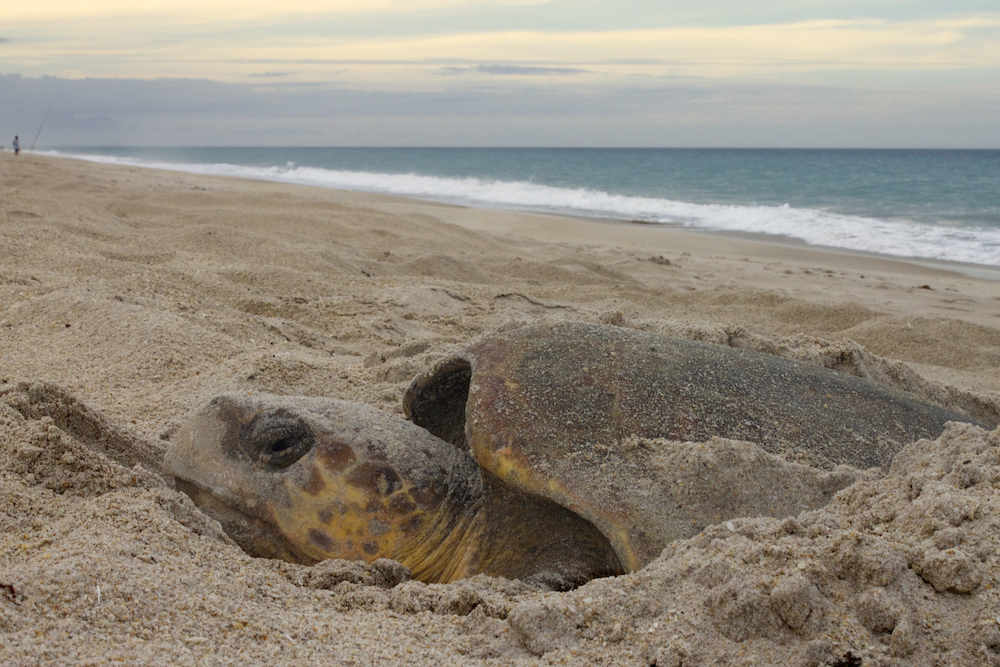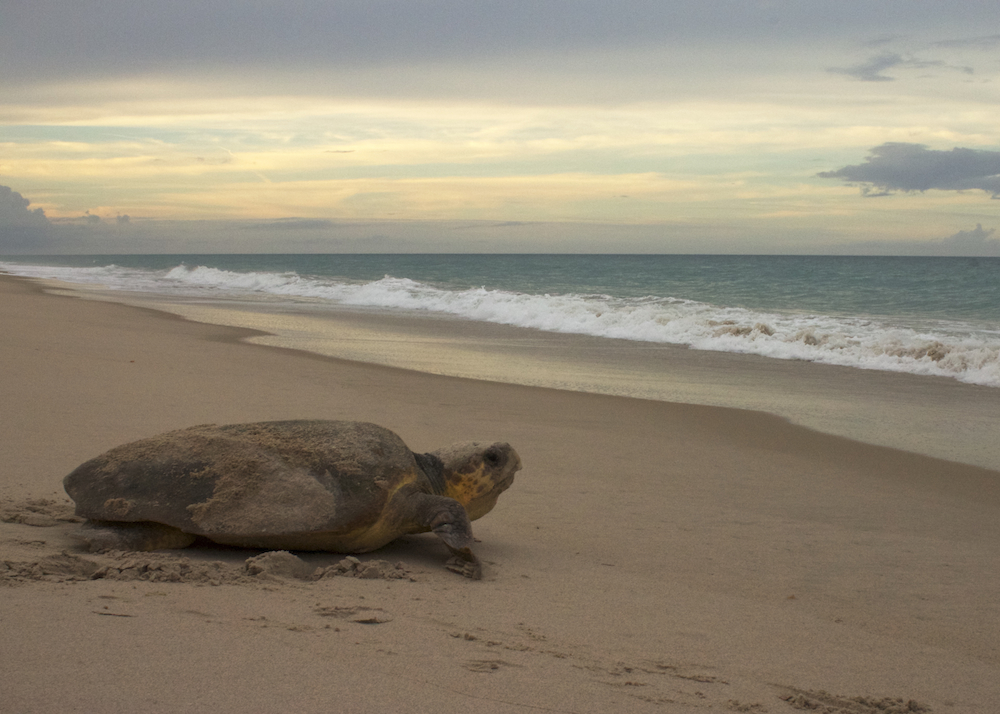Sea Turtles Use Earth's Magnetic Field to Find Home

Female sea turtles, known to swim thousands of miles before returning to their birthplace to lay eggs, find their way home by relying on unique magnetic signatures along the coast, a new study finds.
For more than 50 years, scientists have been mystified by how sea turtles do this, said the study's lead researcher, J. Roger Brothers, a graduate student of biology at the University of North Carolina at Chapel Hill.
"Our results provide evidence that turtles imprint on the unique magnetic field of their natal beach as hatchlings, and then use this information to return as adults," Brothers said in a statement. [Quest for Survival: Photos of Incredible Animal Migrations]
Previous studies have shown that sea turtles use Earth's magnetic field to help guide them at sea, but it was unclear whether magnetic features also help steer them toward the nesting sites chosen by their mothers, the researchers said.
To investigate, the scientists examined a database of records covering 19 years of loggerhead sea turtle (Caretta caretta) nesting along the eastern coast of Florida, the largest sea turtle rookery in North America. Earth's magnetic field, which acts as a giant invisible shield that protects the planet from dangerous solar radiation, changes over time. Earth's iron core is surrounded by a layer of molten metal, and as this molten metal sloshes around, it causes fluctuations in the magnetic field, with some areas strengthening and others weakening.
The researchers wondered whether turtles had changed their nesting locations as magnetic signatures drifted across the coast.

"We reasoned that if turtles use the magnetic field to find their natal beaches, then naturally occurring changes in the Earth's field might influence where turtles nest," Brothers said.
Sign up for the Live Science daily newsletter now
Get the world’s most fascinating discoveries delivered straight to your inbox.
A look at the data, from 1993 to 2011, confirmed this idea. At certain times in some places, Earth's magnetic field shifted so that magnetic signals from nearby beaches moved closer together. During these times, turtle nests densely covered these areas, they found.
Similarly, there were fewer turtle nests, and the nests were farther apart, in places where magnetic signatures diverged, just as the researchers predicted.
"Our results provide the strongest evidence to date that sea turtles find their nesting areas at least in part by navigating to unique magnetic signatures along the coast," the researchers wrote in the study.
Scientists are unsure how turtles detect the geomagnetic field, but it's possible that tiny magnetic particles in their brains help the turtles process unique signatures, Brothers said.
Whatever the mechanism, it clearly helps sea turtles find their birthplace so they can reproduce, usually on accessible beachesthat have soft sand, the right temperature and few predators.
"The only way a female turtle can be sure that she is nesting in a place favorable for egg development is to nest on the same beach where she hatched," Brothers said. "The logic of sea turtles seems to be that 'If it worked for me, it should work for my offspring.'"
The study was published today (Jan. 15) in the journal Current Biology.
Follow Laura Geggel on Twitter @LauraGeggel. Follow Live Science @livescience, Facebook & Google+. Original article on Live Science.

Laura is the archaeology and Life's Little Mysteries editor at Live Science. She also reports on general science, including paleontology. Her work has appeared in The New York Times, Scholastic, Popular Science and Spectrum, a site on autism research. She has won multiple awards from the Society of Professional Journalists and the Washington Newspaper Publishers Association for her reporting at a weekly newspaper near Seattle. Laura holds a bachelor's degree in English literature and psychology from Washington University in St. Louis and a master's degree in science writing from NYU.









